We all love teaching class literature, right? I’m ecstatic when I get to immerse the students in a great story or novel. Let’s face it, that’s why most of us chose to become English teachers! So how do we get students interested in the literature at the start of a novel or story unit? And how do we sustain their attention as they read? In this post, I will share some answers to these questions and also provide a printable resource to use when you’re teaching class literature.
It’s important to help create eager readers when we bring new literature to our students. When you’re ready to introduce that great story, drama, or novel, here are some effective techniques to grab their attention:
-
Use Concrete Objects –
Think of some object that relates to the text that would intrigue the students. Bring it to class, and talk about the way it’s used. When teaching Sorry, Wrong Number, I bring in a big, old rotary telephone. Students love dialing their phone numbers on it! Then I use the “classic” ring from my cell phone to add suspense every time the phone rings as we read. If you teach “Thank You M’am,” by Langston Hughes, bring in a great big purse filled with all kinds of useful items! Ask students if they’ve ever heard of the expression “everything but the kitchen sink.” You can have them guess what might be in the purse. Then, after pulling out some of your items, tell them about the similar phrase “everything but a hammer and nails,” which is used in the first sentence of the story. Just don’t have a hammer and nails in the purse!
-
Survey the Class –
Access their prior knowledge about a setting or an important concept with a quick survey of the class. As we start our novel study of The Giver, I tell students that the story is set in the future and then ask if anyone has previously read the book. I usually get a few hands up. Then I say, “Here’s another story that’s set in the future,” and I hold up a copy of The Hunger Games. When I ask if anyone has read this book, I get a lot more hands. Even more students respond when I ask who has seen the movie. Then I hold up a copy of Divergent, and ask the same questions (including the movie) and do the same thing with The Maze Runner. Now I have a good deal of the class feeling a connection to enjoying futuristic stories. You can then pose a question that allows them to express some of their prior knowledge or opinions on a post-it note or index card. Right away you gain insights about how your students are feeling towards the literature or genre. You’ll better understand what they know and what they might be excited about.
-
Present Real-World Connections –
Students like to feel that what they read has something to do with them. When teaching class literature, ask some questions that could put them in a character’s situation. Or, relate an upcoming conflict in the story to a school situation or current event. If you use Essential Questions that make real-world connections, choose one or two and involve your students in a turn and talk before reading. When I teach The Outsiders, I begin with an Anticipation Guide with real-world questions where students agree or disagree. Before I hand out the guide, I put students in groups of four. I uncover each statement on my whiteboard one at a time. Students get an opportunity to think and discuss each issue and then each group shares. It’s a powerful way to pull students in and shape their eagerness to read!
The Story Squares Activity
One challenge I run into when we are reading literature as a class is sustaining every student’s attention to the text. Do you notice some students whose eyes are not on the text? Is someone actually glancing out the window? Staring into space? Or drawing something on the desk?
Well, I’d like to share a simple strategy called Story Squares that helps keep students anchored to the text while we read it aloud together. The handout contains nine squares that students must fill in when you make a quick stop at nine different places in the reading. It works best with a longer story or chapter. I first used it when I taught “from Boy: Tales of Childhood” by Roald Dahl, and it was perfect for sustaining focus! It does require a little prep, but it also allows you to assess a variety of areas AS they read.
A completed “Story Squares” page might look like this:
You can print out the FREE Story Squares handout to use with your students with any text by clicking here: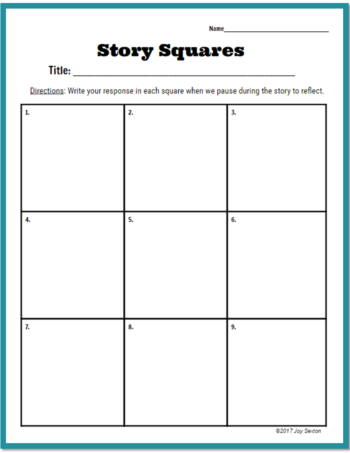
Steps to Implement the Story Squares
- To prepare, look over the text and decide on 9 places where you will stop and pose a quick prompt orally to the class. Mark your text using small numbered sticky notes.
- Create your prompts by looking at each section of the text and deciding on a skill that you would like students to practice. The prompt can be a recall question, a judgment, a prediction, an inference, a question about the author’s tone, character traits, figurative language, analyzing a quotation, making a connection, sketching some imagery, ETC. The questions should not take a lengthy time to answer; they should be fairly quick responses. Write each question in on your own Story Squares page.
- Pass out the Story Squares handout to students. Explain that as the story is read aloud, they will be asked to stop and respond to a question at nine different places.
- Enjoy reading the story or chapter and posing the prompts at the allotted times. If the questions are varied (and allow them to feel a connection to the text), students will enjoy filling in the squares. They will stay with the text during reading, and meet with success on this formative assessment. Then, because they have sustained their attention during reading, they should be able to perform with further success on other activities and assessments you plan to use with the literature.
I hope this strategy will be one you’ll try. Thanks for letting me share. If you have an idea that helps your students stay anchored when you’re teaching class literature, please share in the comments!

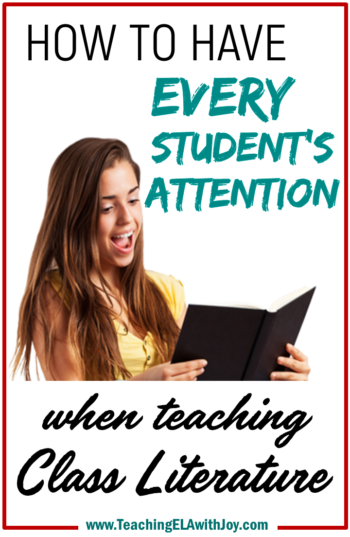
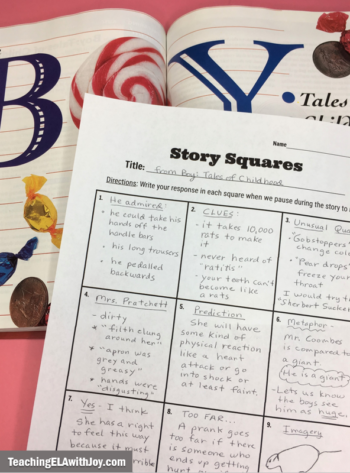
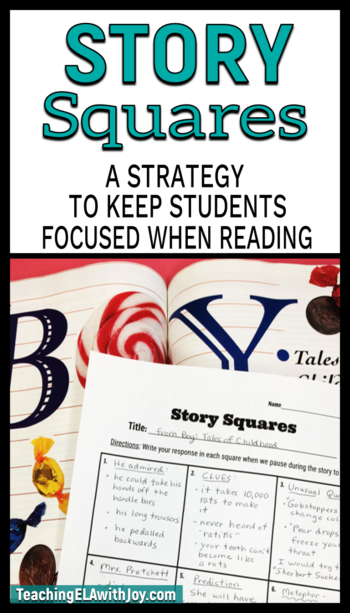
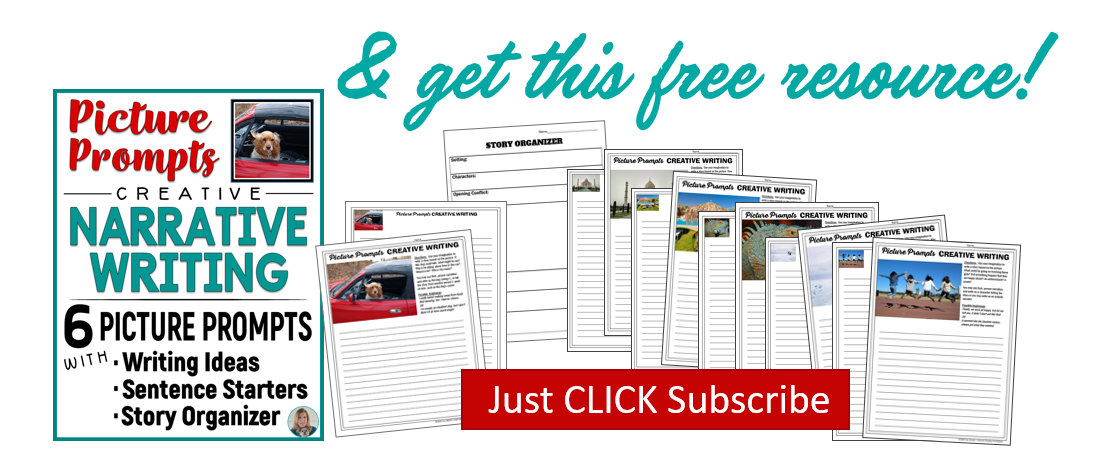


Wow! Thanks for the truly useful tips…can’t wait to try some of them in my classroom 🙂